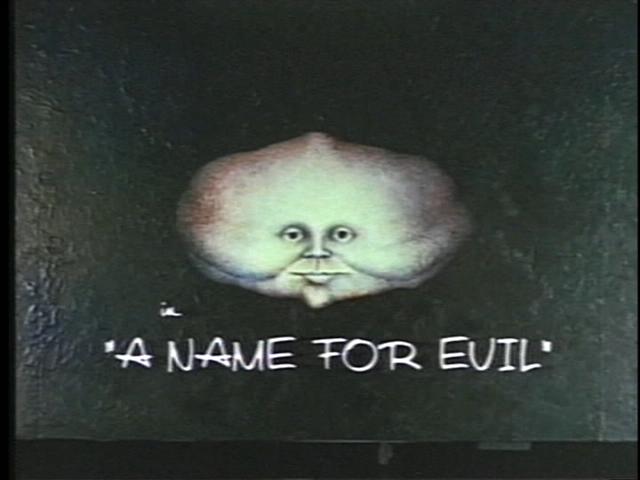
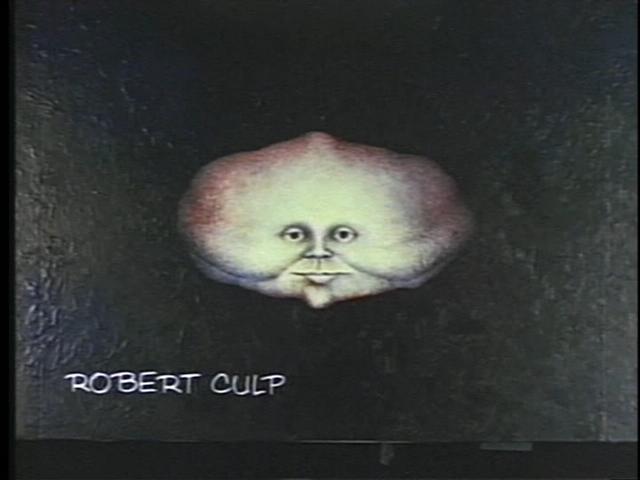
Originally released, 1973
**Contains spoilers – I think**
Oh man. Where do I start with this one?
Early in my exploration of All Things Culp, I kept finding interesting tidbits and discussions about this movie. The descriptors were pretty much the same across the board. The movie was weird, bizarre, strange, it didn’t make sense and, oh yeah, Culp shows all in one scene.
What? Culp shows….what? Well. Ahem…
I bought the movie late last year off Amazon, paying just 4 bucks for the thing. The DVD case carries a warning on it, saying this movie was “not for children or adults who scare easily.”
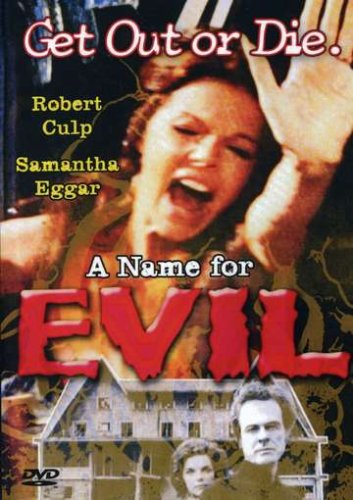
I paused. Horror flicks really aren’t my gig. I can’t do slasher films and the like. If something so hideous happens to Culp in this thing I’ll be scarred for life, I thought. I mean, there was a warning on the DVD case! Even one of the photos on the case was of Culp who looked like his soul had just been ripped away from him and he was about to lose his life!
Gah. I dunno if I can watch this.
But…none of the online discussions mention anything really horrible or hideous happening in this film. Besides, he’s buck naked in some scene…
Okay, okay. No problem. We can handle this. It can’t be that bad. And if it is, I can always stop the movie. Awright, deep breath. Put the disc in, hit play…

Culp plays Jonathan Blake, an architect, who decides he’s had enough of city living and corporate rat race and he and his wife Johanna (Samantha Eggar) are going to pack up and move to his great- grandfather’s decrepit estate up north. The goal is to rehab the large estate. In celebration of breaking free from the chains of daily city living, John takes his television set and throws it off the balcony.
He then turns to his wife and right away, we realize that John has an issue with separating reality from fantasy as he goes back and forth picturing exotic dancers and Johanna with her hair down and looking at him with longing. The reality however, is she’s not looking at him this way. She’s really not all too thrilled with this move but doesn’t make any argument. Instead she goes to lie down for a while.
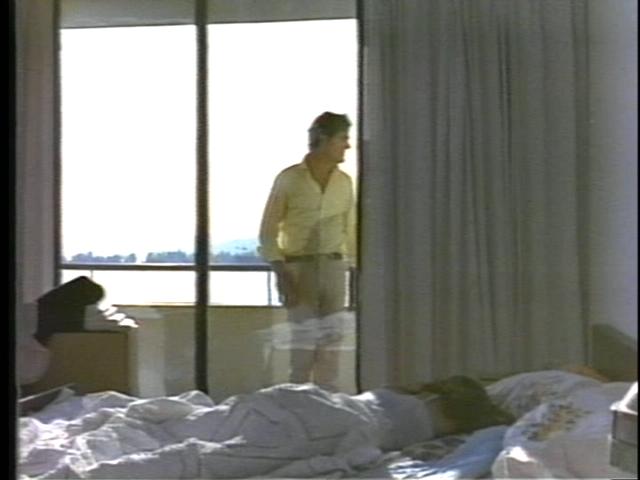
He goes into the bedroom and sits down near her on the bed as she sleeps. “I wish I knew you as well as I love you. I promise you by all that I hold dear, which, above all is still you, I can tell the truth from fantasy. Let’s try and find out the truth, together. I love you, woman. Embrace the truth with me before we wreck each other. A five minute embrace. Each day…” When he steps out on to the patio and looks back in, it’s fantasy again. She’s standing at the door way, says she wants him to make love to her, and that she can’t wait until tomorrow when they can wander around the Grove, just the two of them. Then it all snaps back to the reality.
They fly up north and then drive to Fats Landing and stop to check in at a motel before going out to the house. John gets an earful from the motel owner/ local mechanic/preacher about “The Major.” The mechanic’s granddaddy didn’t care for the Major and near as can be told the mechanic ain’t too thrilled about John Blake either. Undeterred, John makes an offer to the mechanic to help with hiring local labor for a percentage. The mechanic doesn’t say no, only saying he’ll think about it. (Money talks, he ends up agreeing.)
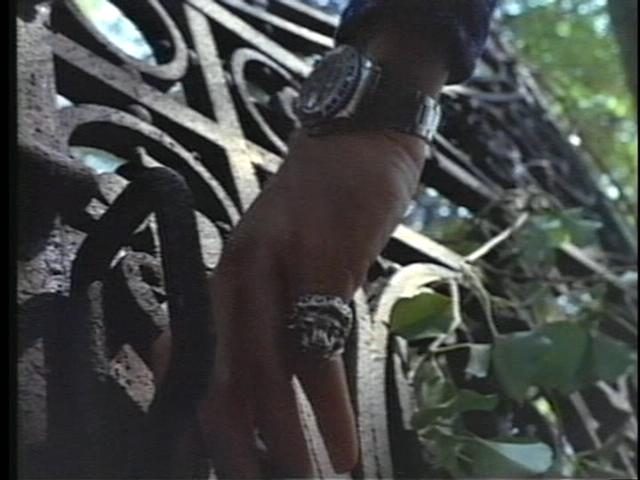
At the house, John and Johanna explore the house and grounds. (Check out that ring Culp’s wearing on his pinky!) The place is a wreck and it’s going to take a lot of work to bring it back to any kind of glory. Here we start getting the creepy stuff going as John thinks he sees somebody on the porch. When he goes up to get a closer look we have the disembodied voice saying, “It’s mine. The Grove is mine! Go away…Go away!”
No, I wasn’t exactly scared by this point.

Johanna’s not really thrilled with the prospects of the house. After a talk with Jimmy – and no, I don’t know who Jimmy is supposed to be, he’s just…there – she’s even less enthused. They had a tenant who apparently had died some time ago, which they weren’t aware of. They had written him several letters which had not been returned to them for any reason. According to Jimmy, no one had lived in the “big house” since the death of the Major. His use of the term “big house” leads me to believe that there was a carriage house or some other building on the property, that maybe this tenant was living in.
John gets part of his fantasy, walking the grounds of the Grove with Johanna. But she’s not all lovey dovey and they’re bickering a bit. The house is wreck and she strongly suggests that they just sell it. He’s convinced he can make it work. She’s not.
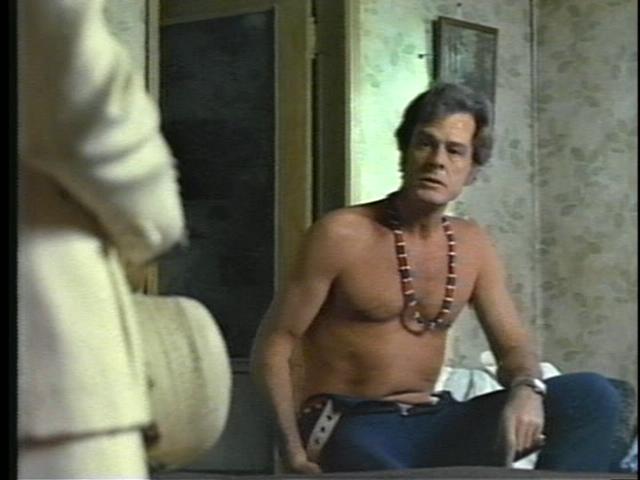
Back at the motel, Johanna’s ready to pack up and go back to Connecticut. John wants to check the house and grounds more and he proceeds to change his clothes to do so. We’re just over 17 minutes into this movie and Culp’s got his shirt off!
In all seriousness though, a very revealing conversation takes place during this scene where Johanna points out that this whole thing is just an escape for him. An escape from himself. She points out the fact that John never finishes anything he starts. He doesn’t apply himself to anything, his job, his career. Their marriage. She’s pretty sure he won’t apply himself to this idea of renovating the house and when things go wrong he’ll blame everything and everyone. It will be yet another unfinished project of his in a long line of unfinished business. He tells her that this time, he’s going to follow through.
Obviously there are some serious problems in their marriage too, of which his fantasies might be contributing to.

He goes back to the house to poke around. And may I add that he goes poking around this dilapidated, falling down, dirty, moldy, crappy old house in WHITE jeans?! Yes, Culp looks great in white jeans, it was practically a trademark for him on I Spy but…Sheesh! Anyway, he talks to Jimmy a bit too, which – have I mentioned I dunno who the hell Jimmy is supposed to be? Is he a caretaker of the grounds? A local guy? He’s always there! Anyway, he tells a story of the Major and when John talks about how the house is his now, Jimmy says, “Always the Major’s, always will be.”
We have a dead animal in the house and some more spooks from the ghost. John spots a man ride off on a white horse. There’s a continuity error here in that Culp’s lost his beads somewhere.
I’m still not scared by much. Intrigued yes, by this ghost and all, but not scared of anything. This is a horror movie?
The renovations get underway and John has hired some of the locals to do the work. They grumble though about being paid – in cash.
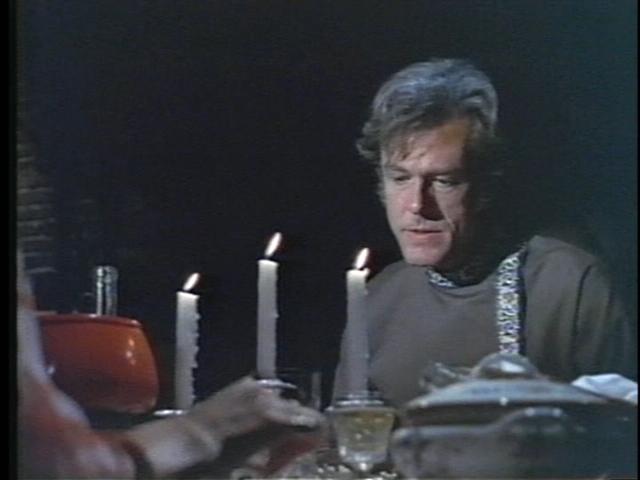
Dinner with Johanna inside the house. They talk about inviting some friends down and some ideas about the house. For the first time, Johanna seems genuinely interested in the progress of the renovation which makes me wonder if this is a fantasy scene of John’s.
During renovations, workers uncover a room that had been sealed up for some 50 years. Then there’s a dissolve to a scene in the room again, only I think it’s partly some of John’s fantasy. He especially likes the way Johanna’s hands massage the leather of the chair. She then wanders off to another room and he hears her laughter. He sees her shadow then sees an extra shadow but when he goes to the room, she’s gone. The room’s empty.
The fantasy, if it was one, or the spookfest, if that’s what it was, ends and Jimmy is standing in the doorway (he’s always there!). When John says what their plans are for the room, Jimmy warns that the Major won’t like it.
Like the ghost of the Major earlier in the film, John says that the house “is mine.” He basically tells Jimmy that if he doesn’t like what’s being done, he can leave.
Then we have some more spooky weirdness, shadows on the walls, the neighing of a horse, MORE shadows on the wall and then John nearly falls down the stairs. The Major’s voice warns once again, “The Grove is mine! Go away!”
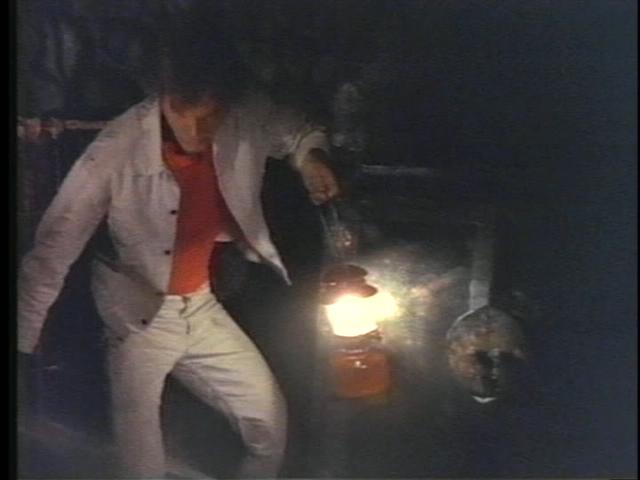
Then we find some weirdness in the basement. John hears Johanna’s laughter again and finds she’s in the basement as well, or is he fantasizing again? It’s hard to tell by this point. Either way, there’s a tunnel she’s found. After she leaves and goes back upstairs, John looks in the tunnel and a cold blast of air comes through along with the voice of the Major “Go! Go away!” John jumps out of the way of a cabinet or something and he drops the lantern nearly starting a fire (and nearly catching himself on fire, I think Culp’s pant leg gets a taste of it). The fire burns itself out and he takes off through an open basement doorway (NOT the tunnel!)….
… and ends up outside at a water fall.

I’m totally not scared of anything in this movie at this point. I’m just confused. Unfortunately, this is where the unfinished state of the film really starts to show it’s cracks because this makes ZERO sense. He looks like he just barely made it out of hell’s doorway but we saw him leave through a basement doorway that looks like it he should have just ended up outside the house somewhere. Instead he ends up God knows where, with a very beautiful waterfall, babbling to himself about the shadows on the wall and the basement tunnel.
The next scene is John and Johanna entertaining some guests. The woman thinks the old house is absolutely fantastic, groovy and such. Seriously. Her exact quote, “This old house absolutely sends me into a thousand and one fantastic absolutely marvelous ways of understanding what is really such a worthwhile way of developing and reaching out for something. I mean, this is way beyond any kind of description. I can’t believe all the absolutely fantastic – I mean where can you go when you’ve reached the really marvelous kind of aspirations which makes this all so incredible.”

As the women are talking to each other, John’s trying to keep his attention on the husband, Hugh, but he keeps looking toward Johanna and the other woman. Johanna’s complaining about no heat and no running water and all. Hugh is trying to tell John how he can sell the property for 10 times what it’s worth.
Dinner with Johanna again and a talk about their guests. Johanna notes that John always seems uncomfortable around Hugh. John’s reason? “He’s an ass.” Johanna tells John that Hugh is not an ass, he’s a man who knows what he wants in life and he’s gotten it. “That’s not being an ass.” On that pleasant note, they then return to the motor home to go to bed.
John has something else on his mind. And Johanna seems receptive to his amorous intentions until it stops suddenly. We hear the voice of the ghost saying “she’s mine!” before it all runs cold. When John asks her what’s wrong all she says is, “if you don’t know, I can’t tell you.” Man, something is so seriously wrong in this marriage.
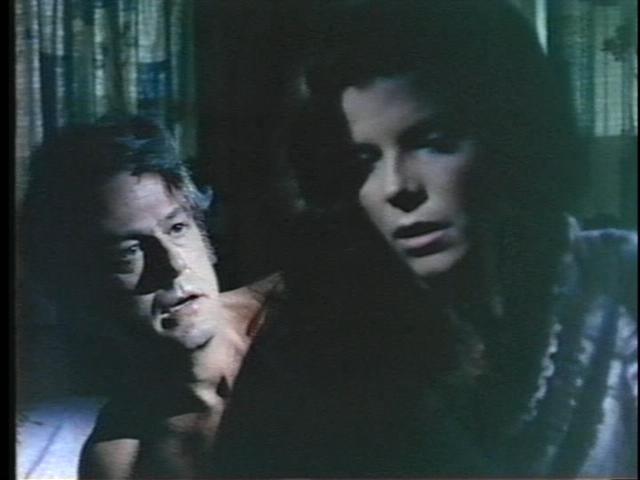 Culp, by the way, bares quite a bit in this scene. Not all, as he’s strategically positioned, but quite a bit. Ahem.
Culp, by the way, bares quite a bit in this scene. Not all, as he’s strategically positioned, but quite a bit. Ahem.
Rejected, John dresses and leaves the motor home for a bit. Outside he spots a white horse, the same white horse he had seen and heard a time or two before but now it was right there in front of him. And Jimmy just happens to be out and about during the night too (imagine!) and is there for John to ask who the horse belongs too. Jim says it’s the Major’s. Wait a minute, hasn’t the Major been dead now for like 50 years?? The average age of a horse is anywhere from 25 to 30 years but…. John jumps on the horse and rides off.
Folks, this is where the electric kool aid acid test goes viral and the movie spins totally off into hippy dippyville. Totally groovy, free form funkified hippy heaven.
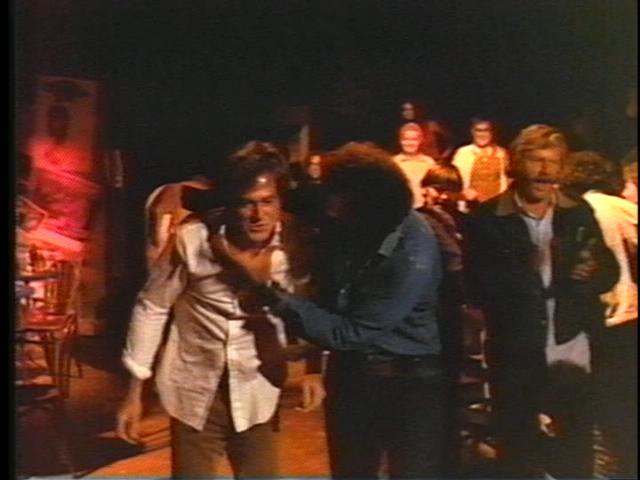
John rides the horse to Fats Landing, rides the horse straight into a bar and proceeds to spill off the animal and on to the floor. He’s hauled up off the floor, brushed off, offered a drink and invited to dig the scene.
And what a scene. We’ve got singing and dancing, and roasted chicken and some kind of arm wrastlin’ thang going on and spaghetti. Lots and lots of spaghetti. No sauce though. More dancing and singing. Beer and drinks flowing. The horse finally turns around and leaves.
Billy Joe Royal sings a song. Billy Joe Royal?! How he went from “Down in the Boondocks” to this thing, I’ll never know.
The mechanic/preacher dude from earlier in the movie, introduces John to a pretty young blonde (Sheila Sullivan). Really, strains of “Love the One You’re With” should’ve been playing at this point. Instead, Billy Joe Royal starts in with a song called “Mountain Woman.” (Actually not a bad song but it doesn’t appear he released it on any of his records.)

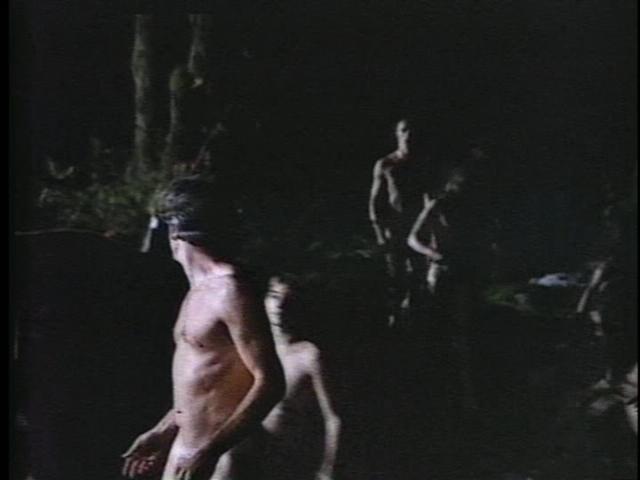
The pretty young blonde starts unbuttoning John’s shirt. (Culp’s shirt is off again!)
It isn’t long before everybody’s naked and dancing and then there’s a romp through the woods. I have completely forgotten by this point that this is supposed to be a horror movie. This is the point where Culp bares all and, folks, this about the only screen cap I can post without getting myself in trouble! (Culp, conveniently, censors himself!)
Needless to say he scores with the girl (crass way of putting it but…) and then he rambles on to her something about people who are never wrong, who never make a mistake “are beautiful people. And also very, very dangerous…”
In the morning light she asks if she’ll see him again. He doesn’t know. She tells him who she is, where she lives and that she’s there most all the time. She knows who he is because she knows where his big old spooky house is. All he can do is wonder what happened to his shirt and to the horse. He has pants and a jacket. And a hat. What I want to know is where his clothes came from because he was not carrying them when they first came out into the woods! Nor was he wearing that jacket and hat when he first rode into the bar.
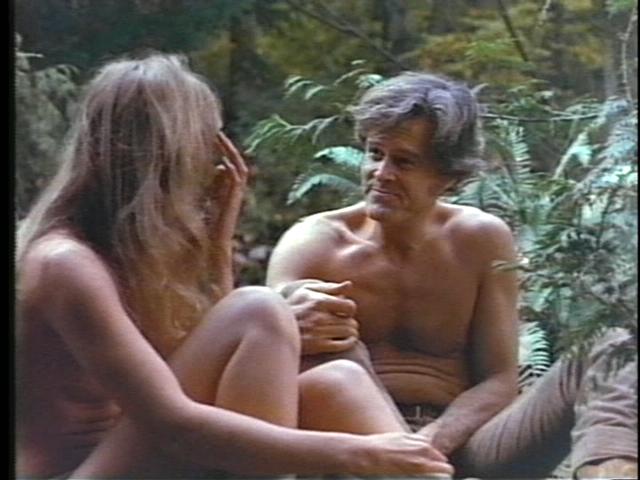
He returns to the house and the trailer, to find the door open, the bed wrecked and an ash tray with a cigar in it. We then see the Major briefly up on the balcony (he dresses like Brett Maverick), smoking a cigar.
Inside the house Johanna is cleaning up from their dinner the night before. She talks about how they’ve been there six weeks and very little has been done. They have half the kitchen, a place to sleep and a room for John’s “study.”
We just saw John in the previous scene have relations with a woman who was not his wife. Now he’s all jealous thinking that somebody was in the trailer with Johanna that night and he asks her. The answer she gives him is that it was him, that he had gone out for about ten minutes and came back as something vile, saying he had tried to kill her.
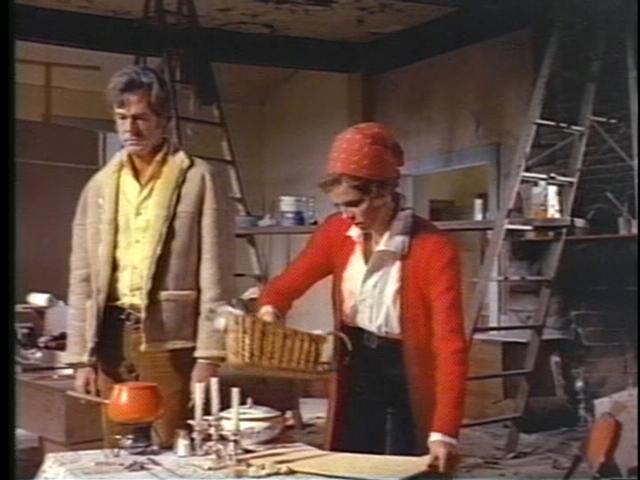
Her description of the experience would have made a fine horror film scene. But instead we had John in hippy dippyville.
Anyway, he tells her that he wasn’t there last night, he was at Fats Landing and that he can prove it.
He then goes later that night to where Luanne lives, the girl he was with during our hippy dippy scene. To find out, he tells her, if she was for real. (Or was Johanna right and he was as vile as she described and he didn’t remember any of it.) So he and Luanne talk for a bit and then drive to a waterfall. And they do it again…
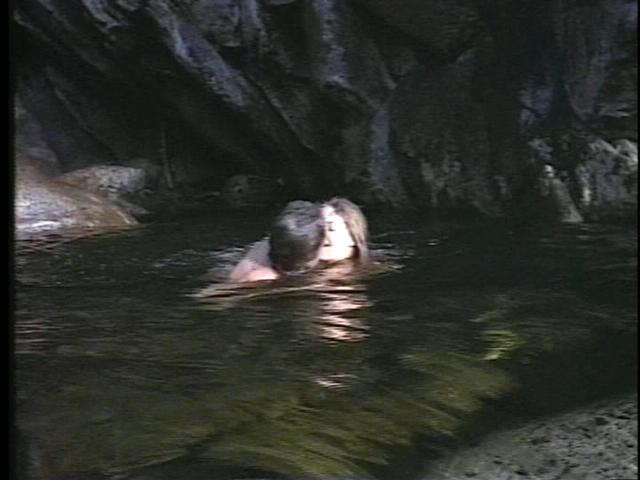
Afterward, he drops her off and drives back to the house. As he’s driving, Johanna’s words about him, how he doesn’t apply himself to anything, how he’s sick, insane… and how he tried to kill her echo in his mind. When he comes back to the house, he comes in through that tunnel in the basement. (The one we’re not sure where it leads out to, to begin with). He goes up to the bedroom, where Johanna is napping, removes his clothes and sits down on the bed beside her. His owns words echo in his mind, about knowing the difference between fantasy and truth. “Let’s find the truth, together….before we wreck each other.”
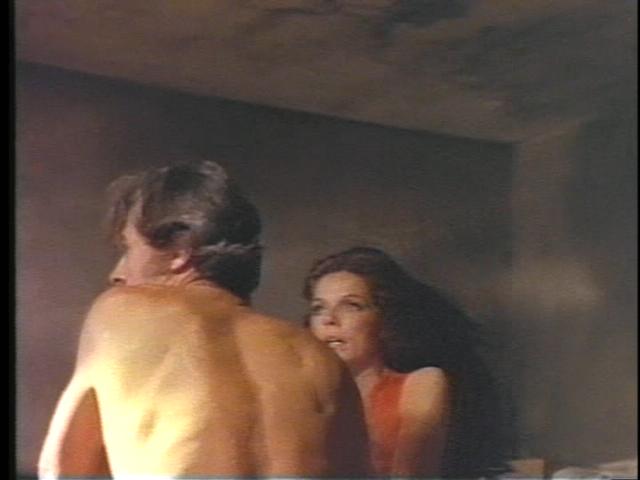
Which leaves the question about this entire scene. Is it truth or is it fantasy? Is he possessed? Because he becomes very aggressive with his advance on her, even smacking her across the face. Then she rises up on the bed and comes up with a knife in her hand ready to…GAH!! He deflects her and the next thing we know, just like with the television set at the beginning of the movie, he’s spinning Johanna around in the room and right out the window…
End of movie. The final scene is a funeral service near the observation deck/gazebo. We don’t see John at all.
Damn. Whoever put the DVD cover together sold snake oil in another life. “Nail biting, suspense filled horror movie?” The pilot episode for Supernatural scared the crap out of me. This movie did not. I tip my hat to the film editor, though, who was given the impossible task of putting what footage there was together into something of a storyline without the ending. What’s unfortunate is the potential for this movie to be more a pyscho-horror was there, the performers were all great and even the film score is fantastic. So what the hell happened?
It’s hard to tell. The film, originally titled “The Grove” when it went into production in Vancouver, B.C., Canada in July of 1970, was never finished and ended up in bankruptcy. Originally to be released by MGM, it languished on a shelf for three years, until it was edited together and released by Penthouse Productions in 1973. There was little to no promotion or fanfare for it (though it was noted in both Playboy and Penthouse magazines at the time) and if they managed to recoup a dollar, I would be amazed to know. The original budget for the film was reported to be $750,000.

The film was shot on location in Vancouver and the Major’s estate, or “The Grove,” was a place known (and still known as) the Wigwam Inn. It was built in 1909 and was once a “showpiece of British Columbia.” In 1962, the Wigwam was under different ownership and had fallen out of favor pretty much by this point. The owner attempted to establish it as a millionaire’s gambling casino but was raided by the Royal Canadian Mounted Police and subsequently convicted on bribery charges and sent to prison for six years. The Wigwam stood idle and empty for several years, stripped of some of its wood and materials by unknown persons, taken over by squatters on occasion and essentially neglected and forgotten. It found new life briefly during the filming of “A Name for Evil,” sat dormant for a few more years and then was bought in 1975 and completely renovated and restored. The Inn changed ownership once more and is now a part of the Royal Vancouver Yacht Club (and a “Members Only” stop over). It stands much more beautiful and inviting today than ever.
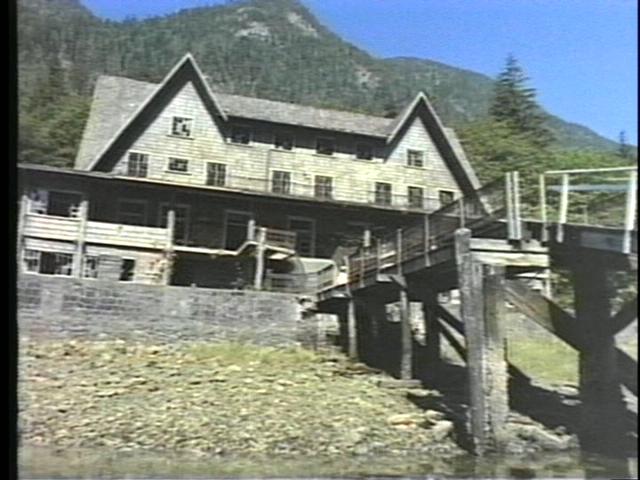

The observation deck/gazebo that Culp stands on in one scene (also where the motor home was parked near) was also renovated and still stands.
Vancouver was quite a buzz in 1970 when the movie was being made, as it was one of three projects reported at the time of being filmed in and around Vancouver. “The Grove” was the first and there were a few mentions in the entertainment section of The (Vancouver) Sun newspaper, starting in June of 1970. Thanks to Google Archive, many of these articles can be viewed.
Such as this article from July 10, 1970 about the art director/set designer for “The Grove.” Interesting to note that not all the interior rooms seen in the movie are from the Wigwam Inn. Another home that was being remodeled at the time was utilized.
Celebrity columnist Jack Wasserman for The Sun mentioned Culp in a column on July 14, 1970…
“That really was Robert Culp riding in the Sea Festival parade Saturday but the girl beside him was a script assistant from the company that is producing The Grove. Samantha Eggar begged off with a sore back. Culp was dragged in at the last minute as a favor to Doug Emery, of Harbor Ferries, who is a paddle wheel in the festival. Incidentally, after the parade, the assorted dignitaries in charge of events were so busy congratulating themselves that they completely ignored Culp, who’d taken a water taxi down from the North Arm just to help out.”
They ignored Culp?! How rude!
A water taxi or any kind of boat, by the way, is the only way you can get to the Wigwam Inn. There are no roads.
One other press mention I found was from New York Post syndicated columnist Earl Wilson, who wrote a piece about Culp and Sheila Sullivan in November, 1970. The movie here is referred to as “In the Beginning” and there’s no mention of it not being completed. Culp lists this movie as one of three things he had done as an actor that he actually liked (up to that point, the other two things being I Spy and Bob & Carol & Ted & Alice), a sentiment that apparently stayed true even years later.
“A Name for Evil” is available from Amazon.com, still for about $4.
is available from Amazon.com, still for about $4.
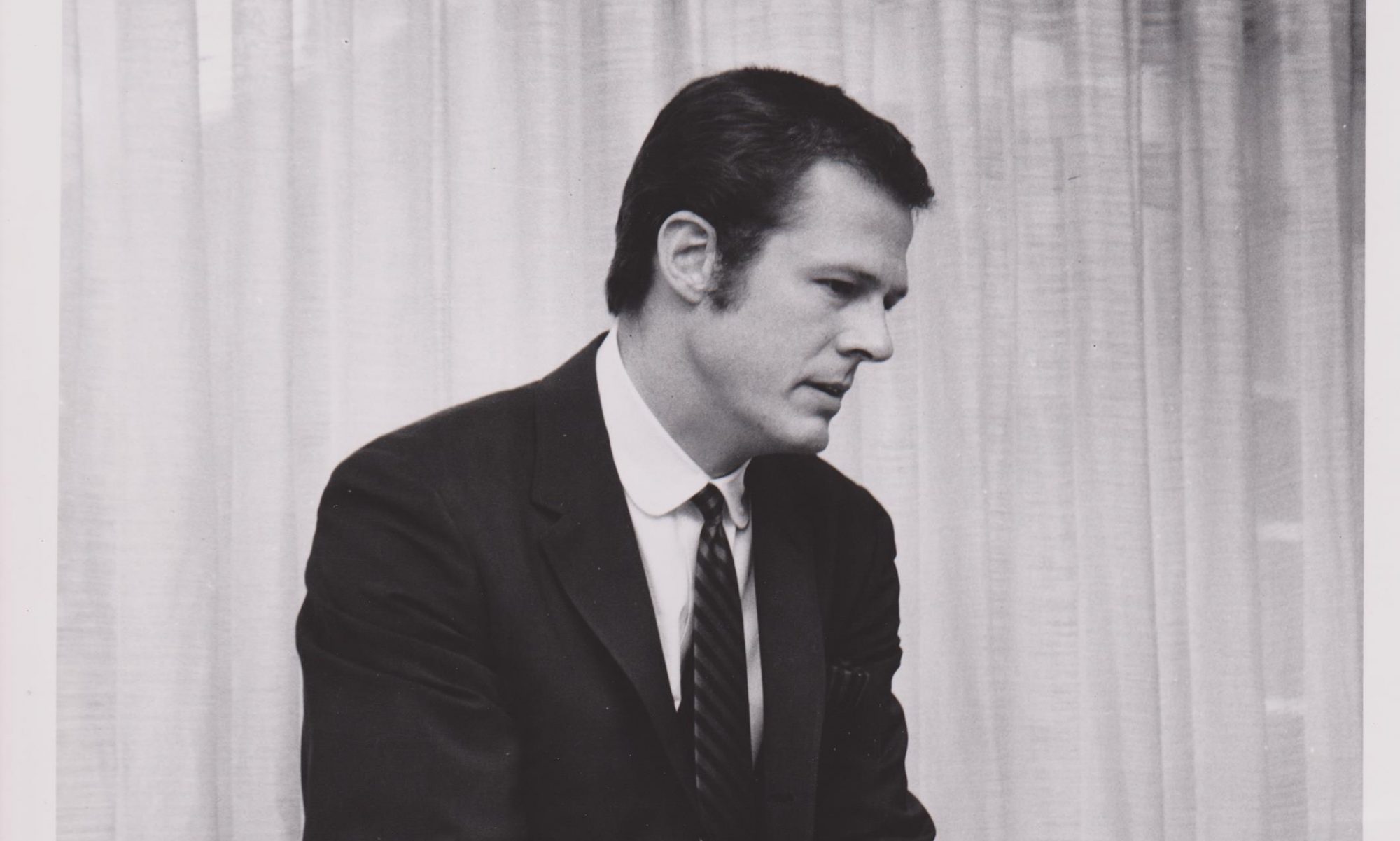



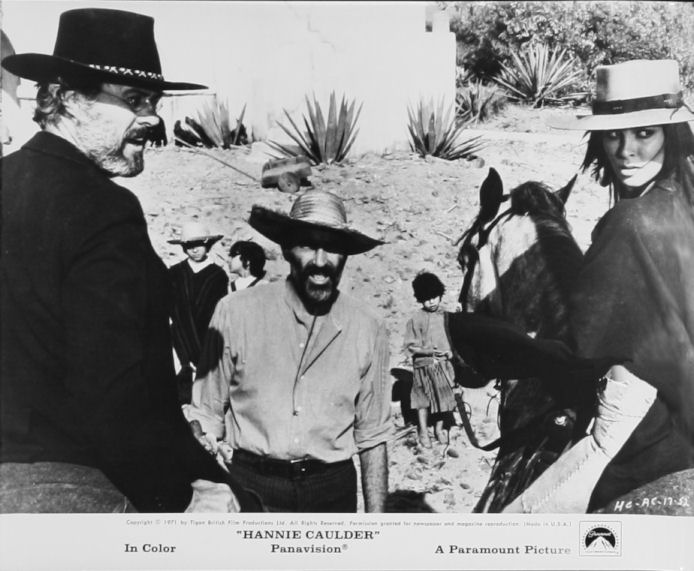


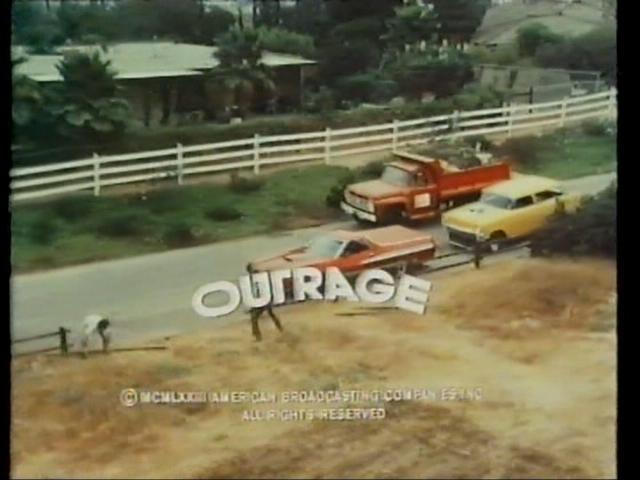
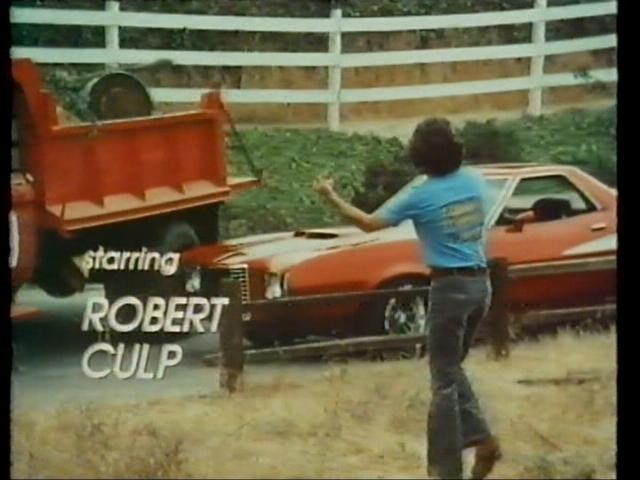
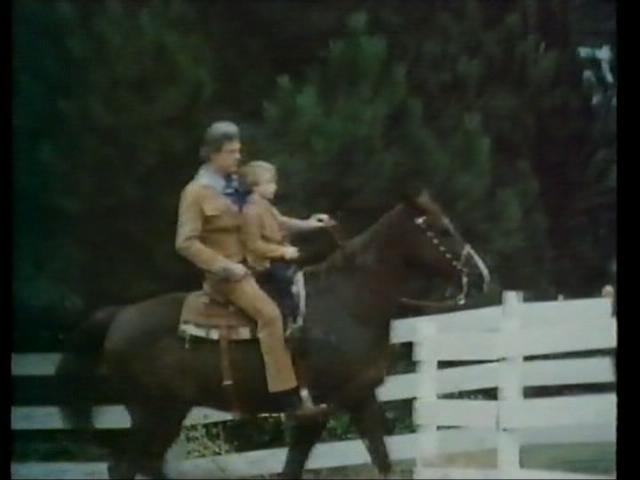
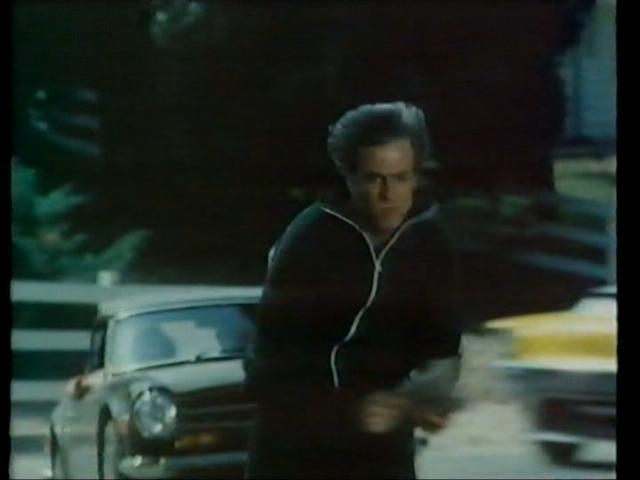
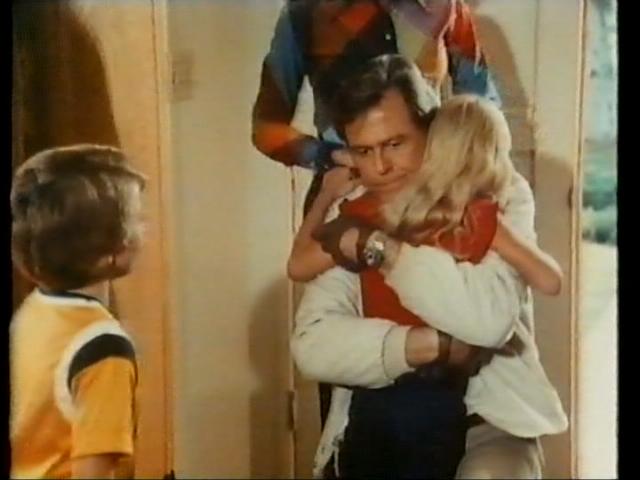
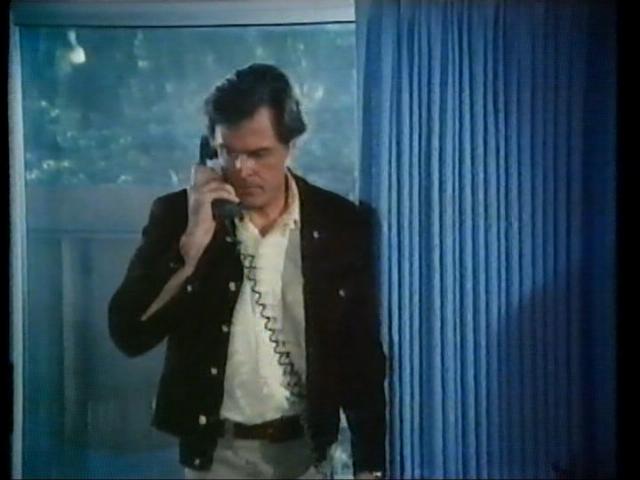
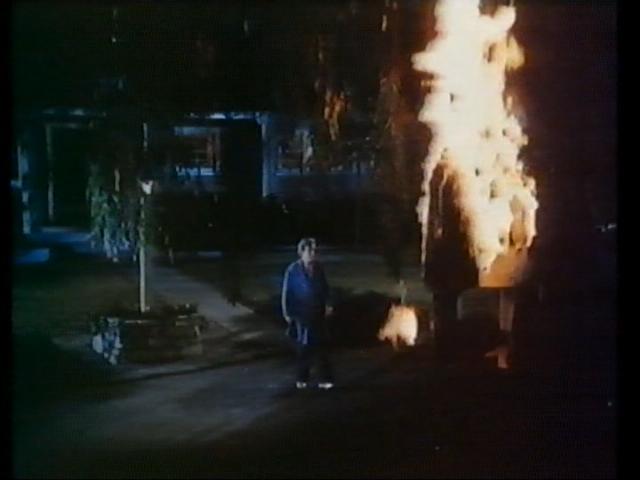
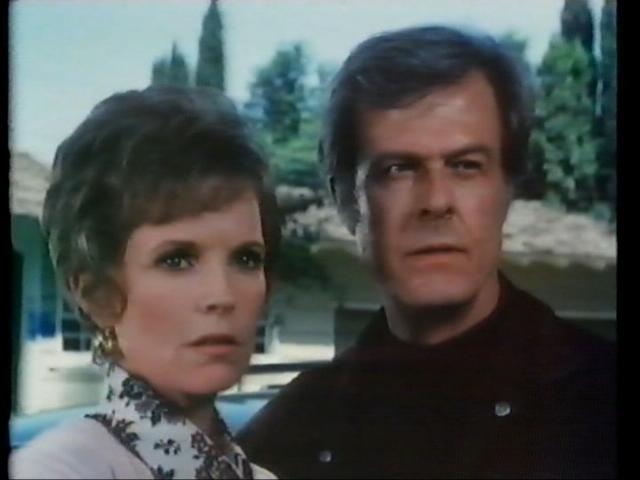


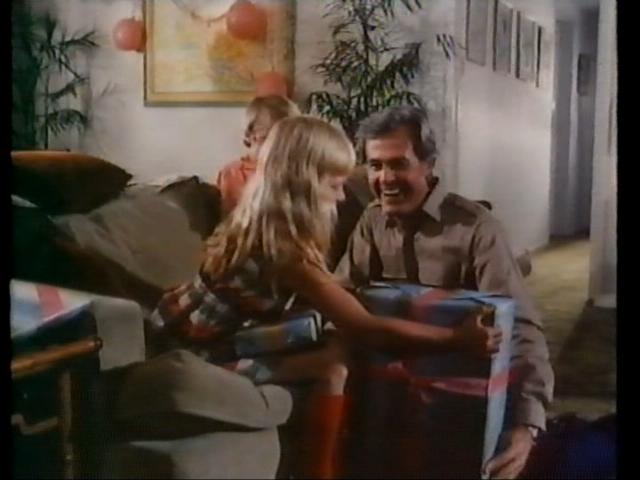
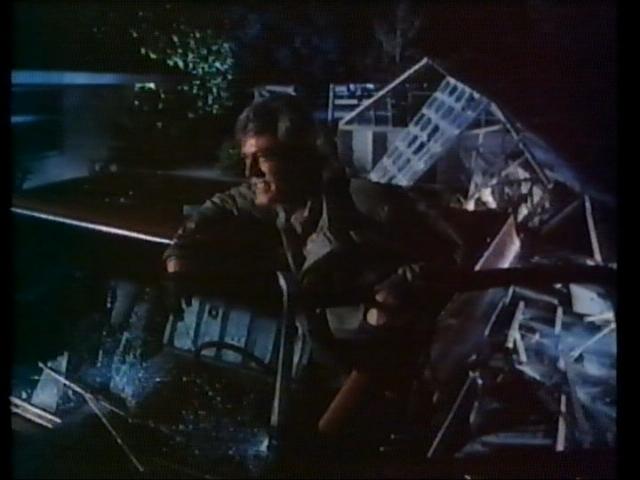
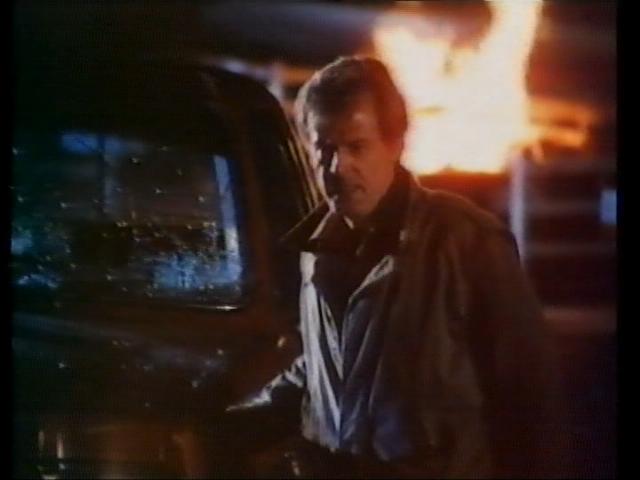
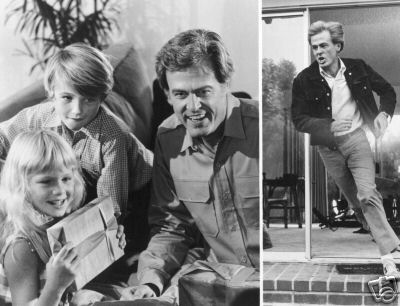
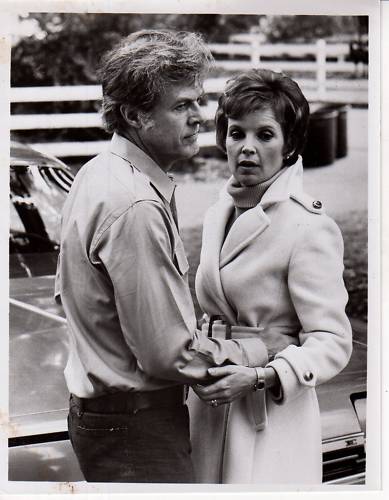
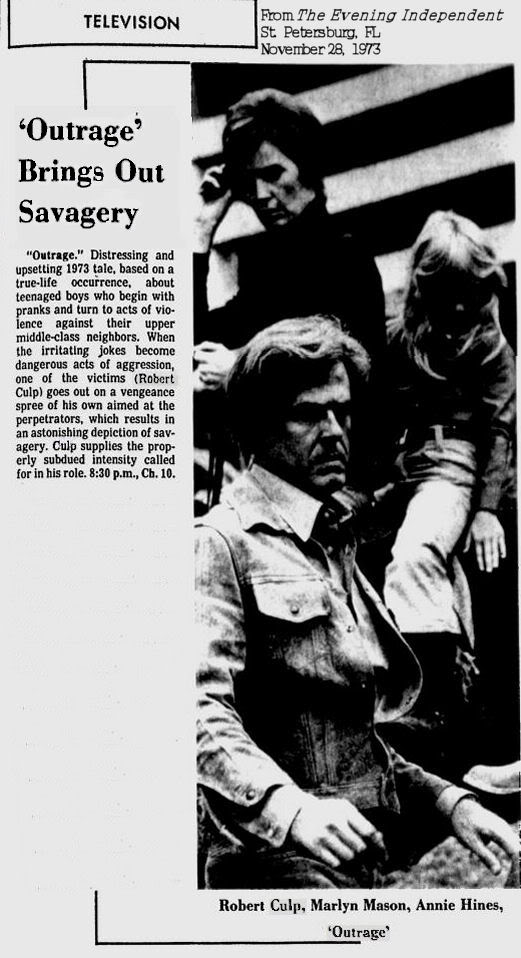
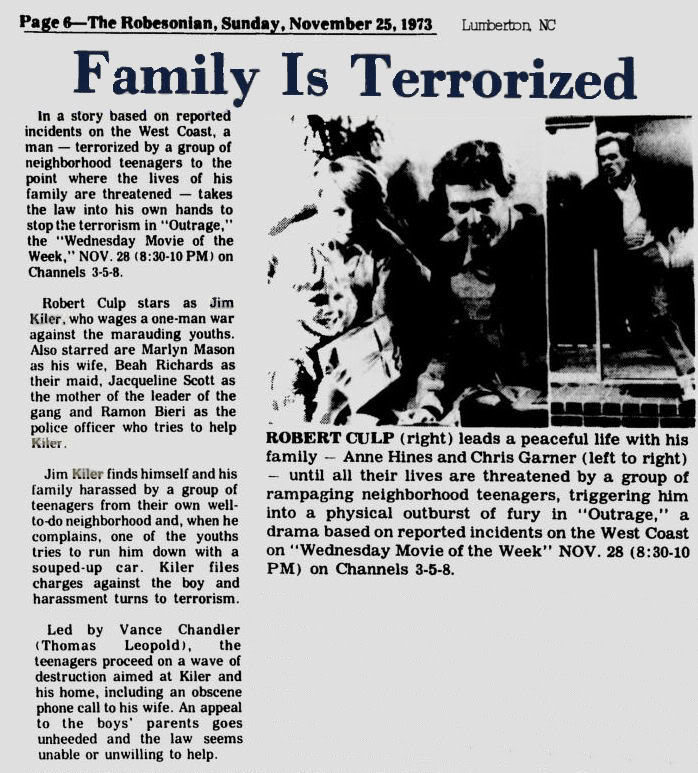
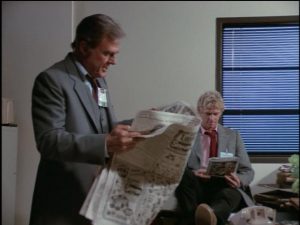 I didn’t start mining through the Google newspaper archive until I was doing research for the movie A Name for Evil and now I find myself getting lost looking back through old newspapers. (I’m a history buff anyway). Subsequently, I’ve been digging through looking for whatever I can for whatever Robert Culp movie or TV show I’m writing about next but since I only just started doing this, movies such as Inside Out (and Hannie Caulder) missed out initially.
I didn’t start mining through the Google newspaper archive until I was doing research for the movie A Name for Evil and now I find myself getting lost looking back through old newspapers. (I’m a history buff anyway). Subsequently, I’ve been digging through looking for whatever I can for whatever Robert Culp movie or TV show I’m writing about next but since I only just started doing this, movies such as Inside Out (and Hannie Caulder) missed out initially.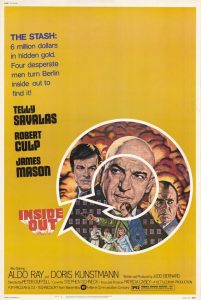
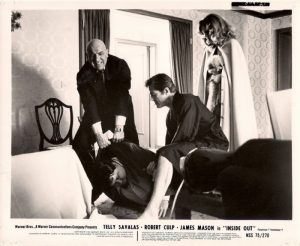













 Culp, by the way, bares quite a bit in this scene. Not all, as he’s strategically positioned, but quite a bit. Ahem.
Culp, by the way, bares quite a bit in this scene. Not all, as he’s strategically positioned, but quite a bit. Ahem.








